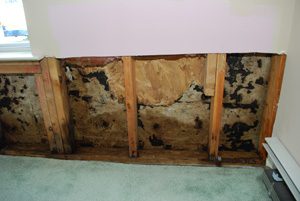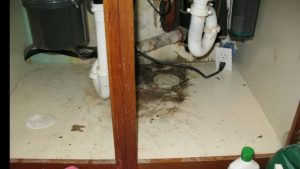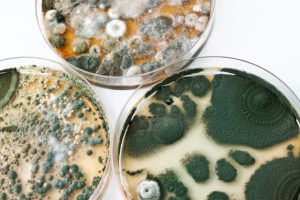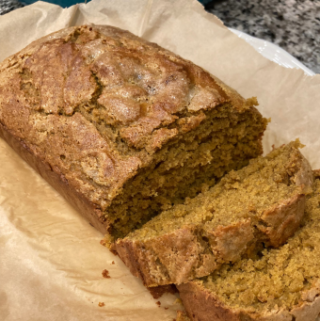
“There is mold everywhere. It’s on your shoes. Of course it’s in your house.”
This naive and condescending opinion was expressed to me when I first began exploring the possibility of toxic mold in my home. It is partly true. Yes, there is mold everywhere. It is a product of nature. It happens outside as well as inside. The implied untruth is that mold is normal and harmless. That is not always so.
It is estimated that around 50% of the homes in the United States are in fact water damaged buildings. This problem has increased since the 1970’s when construction practices changed, sealing up homes so tight that they can not breathe. Inadequate ventilation traps moisture inside, where it feeds on organic material like wood and the paper found in drywall. Common sources of moisture include leaking roofs, leaking/condensing water pipes or duct work, high humidity, and unvented appliances (such as a clothes dryer).

Once an organic substance has been exposed to moisture, mold growth can begin within 24 to 48 hours. Once growth has occurred, mold will continue to proliferate until the source of moisture is eliminated. This horrifying link is an example of what happens when there is moisture, organic material, time, and poor ventilation.
Exposure to mold can cause mild symptoms such as sneezing, coughing, and watering eyes, or it can cause debilitating symptoms such as fatigue, headaches, poor brain function, digestive distress, and immune dysfunction. The thing to remember is that mold can affect people as an allergy, an infection, or an inflammatory immune response. The mold remediator who came to work on our home told me that if I didn’t have asthma, I luckily escaped the effects of our moldy home. He was sorely misinformed. He was only thinking of mold as a possible allergen. It can do so much more.
 Mold grows by producing spores. While mold needs moisture to produce spores, spores do not need moisture to survive and thrive. They can continue to live, even in a dry environment. Toxic molds have spores that produce mycotoxins. Mycotoxins are a secondary metabolite capable of inducing illness and even death. There are hundreds of known mycotoxins. The most well known are Aflatoxin and Trichothecene. Aflatoxin is produced by Aspergillus mold. It is known to be carcinogenic. It can also produce symptoms such as liver damage, abdominal pain, vomiting, disruption of food digestion and absorption, and even death. Trichothecene is produced by Stachybotrys Chartarum (otherwise known as black mold). Trichothecene can produce symptoms such as fatigue, abdominal pain, mental impairment, and bleeding. Trichothecene mycotoxins are currently being used in biological warfare research. It is thought that Gulf War Syndrome is due to exposure to T2 (Trichothecene) mycotoxins during biological attacks in Desert Storm. Mycotoxins can damage and even mutate DNA as exposure continues. Sadly, the effects of mycotoxin exposure are real and lasting.
Mold grows by producing spores. While mold needs moisture to produce spores, spores do not need moisture to survive and thrive. They can continue to live, even in a dry environment. Toxic molds have spores that produce mycotoxins. Mycotoxins are a secondary metabolite capable of inducing illness and even death. There are hundreds of known mycotoxins. The most well known are Aflatoxin and Trichothecene. Aflatoxin is produced by Aspergillus mold. It is known to be carcinogenic. It can also produce symptoms such as liver damage, abdominal pain, vomiting, disruption of food digestion and absorption, and even death. Trichothecene is produced by Stachybotrys Chartarum (otherwise known as black mold). Trichothecene can produce symptoms such as fatigue, abdominal pain, mental impairment, and bleeding. Trichothecene mycotoxins are currently being used in biological warfare research. It is thought that Gulf War Syndrome is due to exposure to T2 (Trichothecene) mycotoxins during biological attacks in Desert Storm. Mycotoxins can damage and even mutate DNA as exposure continues. Sadly, the effects of mycotoxin exposure are real and lasting.
 So we’ve established that mold is everywhere. Mold is potentially dangerous. Half of the homes in America are likely contaminated with a toxic soup of mold spores of some kind or another. How do we protect our homes, then? How do we protect our health from these potentially hazardous exposures? Controlling moisture is key. The humidity in a home should ideally be between 30 and 50%, but for sure below 60%. Get a hygrometer for your home to measure humidity. If necessary, run a dehumidifier. Be vigilant about looking for moisture under sinks, in crawl spaces, and in the attic. If there is obvious moisture, all wet material must be dried out within 24 hours or replaced. Moisture meters like this one can help to sense moisture issues within walls. I believe it’s worth the investment to be able to periodically check for dangers that may be unseen. To me, that is the scariest part about toxic mold. The unseen. Invisible mold is just as dangerous as visible mold.
So we’ve established that mold is everywhere. Mold is potentially dangerous. Half of the homes in America are likely contaminated with a toxic soup of mold spores of some kind or another. How do we protect our homes, then? How do we protect our health from these potentially hazardous exposures? Controlling moisture is key. The humidity in a home should ideally be between 30 and 50%, but for sure below 60%. Get a hygrometer for your home to measure humidity. If necessary, run a dehumidifier. Be vigilant about looking for moisture under sinks, in crawl spaces, and in the attic. If there is obvious moisture, all wet material must be dried out within 24 hours or replaced. Moisture meters like this one can help to sense moisture issues within walls. I believe it’s worth the investment to be able to periodically check for dangers that may be unseen. To me, that is the scariest part about toxic mold. The unseen. Invisible mold is just as dangerous as visible mold.





